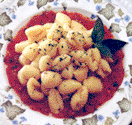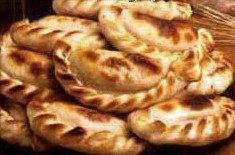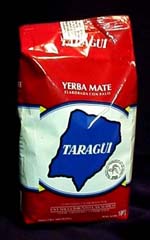 |

| While serving in Argentina you will experience many new foods and also be able to enjoy some familiar ones. Argentina is a large producer and exporter of beef. Therefore, the Argentine specialty would have to be beef. There are many different ways that they prepare it, but especially good is asado. Asado generally refers to the charbroiled method of cooking. In Argentina, Asado refers to ribs cooked over natural charcoal or wood. When I was in the MTC they told us there is one word to learn and use, it is "asado." The nice thing about serving in Argentina is that you will never go hungry. Unlike other Latin American missions, you might actually gain some weight. But with all the walking that missionaries do, I don't think you need to worry. Here are some Argentine foods that you will experience.
| | 
Missionaries enjoying a meal at a Member's home. |
| 
An Argentine Asado. |

Ñoquis. |

Empanadas. |
| Food that missionaries enjoy:
Milanesa: Breaded thin steak
Empanadas: Meat in a pie crust style sealed pouch.
Ñoquis: a potato pasta, similar to a dumpling.
Ravioli
Gizo: A rice dish.
Dulce de Leche: a caramel like spread.
Alfajor: Argentine candy bar
Factura: Argentine donuts
Food you might not look forward to:
Mondongo: Cow stomach
Locro: A stew made from corn cob, hooves, and just about anything else you can imagine.
Green olives, with seeds
|
|
Mate:
Pronounced "mah-tay", this drink is so important to the Argentine culture that it deserves a special mention among the national cuisine. Mate is the national drink. It is a tea made from the yerba mate plant. The dried yerba is placed in a hollow gourd. Hot water and sugar are added and you drink it through the bombilla: a metal straw with a strainer on one end. The taste is difficult to describe, but it is not bad. You may not like it at first, because it is an acquired taste.
Most people gather in groups of friends and family to share mate. Being invited to drink mate is a privilege, and an honor. However, depending on the mission rules, you may or may not be allowed to drink mate.
| |

 |
|
The reason for this rule is that the people of Argentina sit, talk and drink mate together for long periods of time. You could sit around all day, drinking mate and never actually accomplish the mission for which you were called. Also, since everyone uses the same bombilla, it's not particularly sanitary. However, most missionaries can drink mate cocido. It is prepared by boiling the yerba mate on the stove and then pouring off the water through a strainer into a cup, just like a tea. This is how most missionaries experience mate. There are many different brands of yerba. My favorite brand is Taraqui. |
|

 | | Argentina also has many American favorites. You can find Pizza, although it is usually cheese pizza with green olives. While I was serving in Argentina, a local company produced Macaroni and Cheese. Eventually it was available in all of the grocery stores, not just stores specializing in imports. Peanut butter and maple syrup are not available in Argentina. However, a few large stores that have American import sections do carry them. It is still a delicacy when you can find Peanut Butter and Maple Syrup. With the arrival of Wal-Mart in Argentina food like donuts, cinnamon rolls, and some other American food items have become more readily available. In addition, the American influence of fast food can be found. McDonald's is rapidly expanding throughout Buenos Aires, Burger King and Wendy's are available in some areas, and in the capital city of Buenos Aires there is a Subway sandwich. Occasionally there are rumors of Taco Bell in Argentina, however, we were never able to find it.
|
|
Drinks and Gaseosas or Soda Pop:
Although Kool-Aid is not available, Tang is available in many flavors. There are also other brands of juice and punch available. The two main producers of soda in Argentina are Coca Cola and Pepsi. Although the full American line is not available, you can find the colas, Sprite, 7-up, and Fanta. You can purchase 2 liter bottles, but most people purchase recyclable 1.5 liter bottles, and then return the empty bottle when they purchase more. The bottles are then washed and sanitized before soda is rebottled in them. Some soda you probably won't see include: Root Beer, Cream Soda, and Dr. Pepper.
|
|
|
 |
Copyright © 2007 LDS Mission Networksm · mission.net / ldsmissions.net · All rights reserved.
|
 |
|

